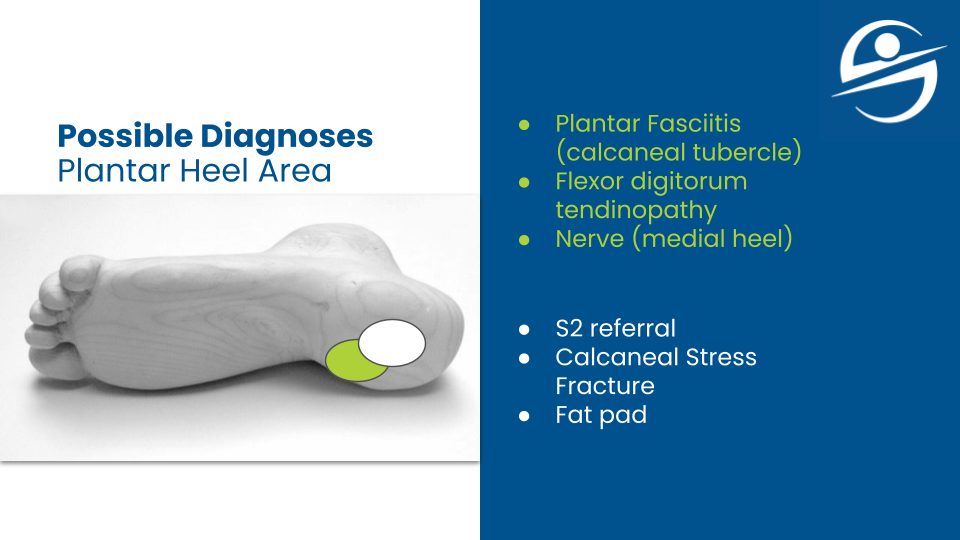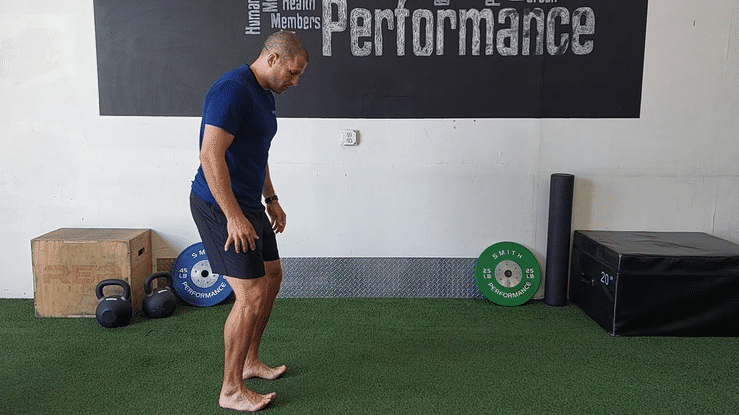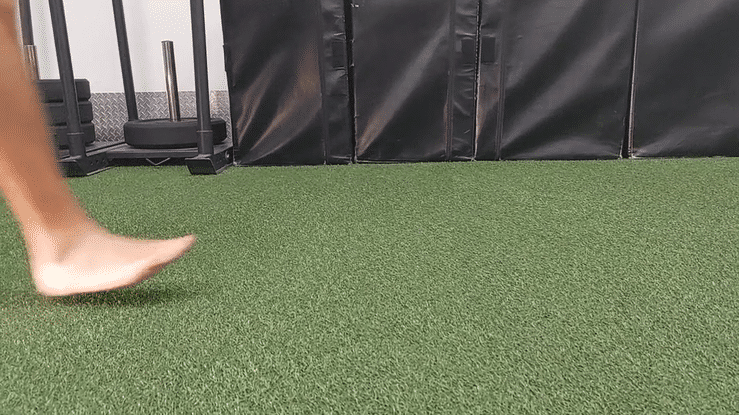Bracing for poor hip control
The SERF Strap
Bracing for foot and lower limb control
The Post Tib Brace

If you’re dealing with heel pain in Tucson that hasn’t improved despite treatment for plantar fasciitis, you’re not alone. At Smith Performance Center, we often see people who’ve tried injections, stretching, shoe inserts, and ice bottles—yet their heel still hurts. In many of these cases, the real problem isn’t the plantar fascia at all, but a muscle on the bottom of the foot called the flexor digitorum brevis. You wake up, swing your legs to the edge of the bed, and… hesitate. You know this is going to hurt. The good foot moves to the ground first—you learned from that mistake a month ago. You brace and put down the other foot, the ungrateful one that will not get better despite the trip to the podiatrist, the injection, physical therapy, the shoe inserts, the ice bottle massage, and the stretching exercises. The foot touches down. It’s not so bad, you

Why is your heel pain not getting better? Heel pain is a common, painful foot condition leading internet searches for “cures to heel pain” or “treatments for plantar fasciitis.” The pain resolves with time if the cause of symptoms is removed, but up to 10% of individuals with heel pain do not get better. These chronic sufferers try everything to get rid of the pain including plantar fascia releases, injections, and pain medications. The causes of heel pain are numerous, ranging from plantar tendinopathies like the flexor digitorum brevis, nerve involvement with tarsal tunnel syndromes or lateral plantar nerve, low back referrals, and double crush syndrome to fat pad injuries. The answer is not more stretching and new orthotics. If you are stuck with heel pain and the typical treatment for plantar fasciitis is not making you feel better, then you likely have a different problem and require a different

Why the Phase of Pain Matters Foot pain while walking is one of the most common reasons people seek physical therapy. Understanding when and where it hurts can reveal the true cause. Its actually diagnostic. (If you want to read more about how we think about diagnostics, read How to Find the Real Cause of Pain: Our 4-Pillar Diagnosis Process). This means we can figure out the pain generator. That is a large list. It can be the fat pad, your fascia (the most common, incorrect diagnosis), plantar intrinsics (muscles on the bottom of the foot which is primarily the flexor digitorum brevis, abductor hallucis, and abductor digiti minimi), the flexor hallucis longus, the tibial nerve, the medial or lateral plantar nerve, the calcaneus, the talus, the bones of the midfoot and forefoot, the foot and ankle joints, ligaments, the hallux (big toe), or the little toes. It does not

If you’re dealing with heel pain in Tucson that hasn’t improved despite treatment for plantar fasciitis, you’re not alone. At Smith Performance Center, we often see people who’ve tried injections, stretching, shoe inserts, and ice bottles—yet their heel still hurts. In many of these cases, the real problem isn’t the plantar fascia at all, but a muscle on the bottom of the foot called the flexor digitorum brevis. You wake up, swing your legs to the edge of the bed, and… hesitate. You know this is going to hurt. The good foot moves to the ground first—you learned from that mistake a month ago. You brace and put down the other foot, the ungrateful one that will not get better despite the trip to the podiatrist, the injection, physical therapy, the shoe inserts, the ice bottle massage, and the stretching exercises. The foot touches down. It’s not so bad, you

Why is your heel pain not getting better? Heel pain is a common, painful foot condition leading internet searches for “cures to heel pain” or “treatments for plantar fasciitis.” The pain resolves with time if the cause of symptoms is removed, but up to 10% of individuals with heel pain do not get better. These chronic sufferers try everything to get rid of the pain including plantar fascia releases, injections, and pain medications. The causes of heel pain are numerous, ranging from plantar tendinopathies like the flexor digitorum brevis, nerve involvement with tarsal tunnel syndromes or lateral plantar nerve, low back referrals, and double crush syndrome to fat pad injuries. The answer is not more stretching and new orthotics. If you are stuck with heel pain and the typical treatment for plantar fasciitis is not making you feel better, then you likely have a different problem and require a different

Why the Phase of Pain Matters Foot pain while walking is one of the most common reasons people seek physical therapy. Understanding when and where it hurts can reveal the true cause. Its actually diagnostic. (If you want to read more about how we think about diagnostics, read How to Find the Real Cause of Pain: Our 4-Pillar Diagnosis Process). This means we can figure out the pain generator. That is a large list. It can be the fat pad, your fascia (the most common, incorrect diagnosis), plantar intrinsics (muscles on the bottom of the foot which is primarily the flexor digitorum brevis, abductor hallucis, and abductor digiti minimi), the flexor hallucis longus, the tibial nerve, the medial or lateral plantar nerve, the calcaneus, the talus, the bones of the midfoot and forefoot, the foot and ankle joints, ligaments, the hallux (big toe), or the little toes. It does not